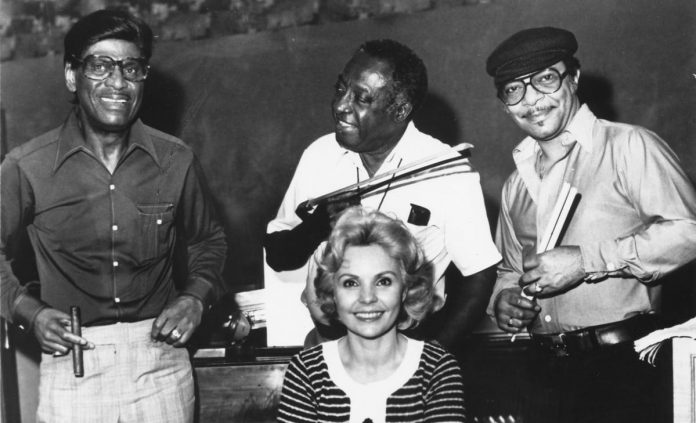The contemporary New York jazz scene might be described in a phrase of the sort Edgar Allan Poe appreciated: of a dismal yet prophetic aspect. As Joe Benjamin has remarked to me, jazz, no matter how excellent or enjoyable, is work: that is, a musician must suffer and produce … and, profanely maybe, think of bread.
In our age of ‘greater interest in jazz than ever before’, ‘Third Stream music’, ‘new concepts’, ‘Lydian tonalities’ and ‘new and fruitful fusions between jazz and classical music’, it seems that mere jazz is unfashionable
Throughout the summer of 1960, work was sporadic but persistent. The enormously enlightened policy of AFM-City subsidised gigs, certain of which I have described in previous articles, provided some activity – opportunities for musicians of varying styles to mix: primarily, an occasion to jam in a big band setting, and to receive payment, strictly at union scale too. However, the winter of 1960-1 has proved to be the darkest since the 1929-30 period. This season usually brings a large amount of social activity to light – afternoon tea dances, weekend club dates, Jewish festivities, cabaret stuff – yet, for the Negro jazz musician (and 99% of the jazz fraternity are, ofay journalists notwithstanding, Negroes), gigs have been sparse, to put it mildly.
For the cliques, enough basic labor persisted – TV, radio, theatre, the commercial recording studios, out-of-town expeditions, downtown supperclub soirees; thus, Milt Hinton – who practically lives in the studios – maintains financial health. Others, wily and experienced, such as Scoville Browne, utilize a variety of accomplishments – jazz and straight, together with contractual work (fixing combos and sessions) – to remain comfortably off, yet never rich! The majority – musicians as gifted as Hilton Jefferson and Harold Ashby – have had a decidedly lean time of it. The cold wind has blown, and blown cruelly. New York is no place to be poor. Fortunately, Jeff has a day job in a bank; and Harold survives on record fees and weekend gigs (frequently at the Celebrity), and is of rotund and exuberant physical health.
Of course, some work has been available. Jeff has gigged during occasional weekends with Claude “Fats” Green’s band, which, although advertised as a “Calypso” combo, is in fact a sturdy West Indian-predominated crew of considerable jazz calibre. Others, though, suffered grievously: Bennie Green, for instance, has been forced to pawn his trombone for 25 dollars, and has to borrow a horn from Keg Johnson. Club managers, recollecting past lapses, have often refused to use Bennie – or allow others to employ him. Such facts are no indictment of Bennie: poverty is no disgrace to the sufferer, only to the community which allows it. A man’s errors – which have hurt only himself – should not be continually resurrected. Despair is not medicine, but poison. In our age of “greater interest in jazz than ever before”, “Third Stream music”, “new concepts”, “Lydian tonalities” and “new and fruitful fusions between jazz and classical music”, it seems that mere jazz is unfashionable. If certain parties are bored with it, GET OUT – clutter up the classical music journals, the avant-garde unsaleables, with your clatter: if the scene was left to the lovers of robustly swinging, honestly exciting, undiluted jazz, men such as Bennie Green would be richer and saner individuals. If only the pretentious consideration of many critics, their highflown evaluations, were replaced by some authentic spark of decency and enterprise, maybe the plight of hundreds of great artists would be mitigated. Perhaps if some of the verbal energy were to be organised into a wide appeal – a really strong and practical attempt to create a new Hot Club movement on an international basis… ?
As it is, the wind blows coldly: “Playboy” and others proclaim a swinging age, in jive circa ’45; senior American music journalists solemnly pontificate from the evidence of gramophone records and press agentry whilst, beyond their pink infatuated world of candy, the ordinary jazz musician – who depends for his family’s daily bread on playing jazz – is often glad to obtain a couple of 25-dollar gigs in a week, playing to the squares who lay cool cash on the bar instead of phoney hallelujahs on the immaculate pages of some girlie magazine that has gotten bit by the kultur-bug, the kitsch of death.
(First part of a three-page article – the rest, in PDF, is available free to subscribers on request)
















